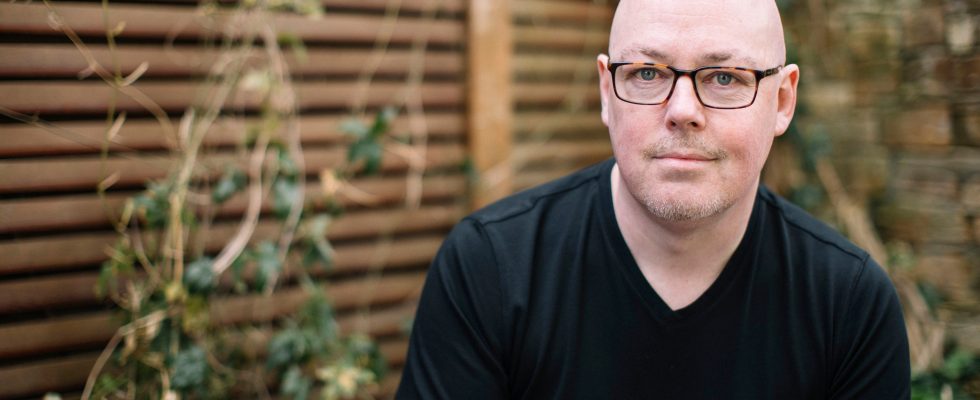On this Monday at the end of March, Dublin wakes up groggy after a crazy weekend. St. Patrick’s Day on Friday, the national rugby team grand slam on Saturday, and Mother’s Day on Sunday…John Boyne, too, is tired, not for taking part in the Irish drunkenness – with his thin build, he admits to feeling more footy than a rugby player – but because of the jet lag after three months spent wandering around Australia. The man is not an oval ball, therefore, nor a fan of Joyce, the other Dublin king either. He admits it to us as we ask him the meaning of the words tattooed on his left arm. “‘We are terminal cases’, this is the last sentence of the World according to Garp. John Irving, he’s my mentor, his work has inspired me since I was a teenager, and, luckily, we became very good friends. ‘We are all incurable’ is an optimistic phrase in my eyes, which means, ‘Don’t waste your life, enjoy every day'”.
The Boy in the Striped Pajamasa moving novel about the Holocaust, written in 2006
So John Boyne, 51, takes advantage of every day to write, write. With 19 novels to his credit since 2000, including six for young people, the former student of Trinity College has established himself on the Irish literary scene, accumulating prizes and distinctions. If each of his books is a success, from the criticism of an Irish Church plagued by pedophilia (He’s no worse blind) to the drama of single mothers and banished homosexuality (The Invisible Furies of the Heart) to the satire of social networks (Carpal Tunnel Syndrome), there is one that propelled it to the charts of world phenomena: The Boy in the Striped Pajamasa moving novel on the Shoah, written in 2006 (republished these days in an illustrated edition by Gallimard Jeunesse), and of which he publishes today in France the formidable sequel under the title Life on the run.
Let’s go back for a second to boy in striped pajamas, translated into 51 languages, recommended for college students in as many countries, and adapted for the cinema in 2008 by Mark Herman. Despite the years, John Boyne still talks about it with fervor: “This story of friendship between two little boys on either side of barbed wire, one, Shmuel, being on the side of death and the other, Bruno, of life, by the simple fact of their birth, carried me away. I wrote it, in one breath, in three days. I finished the first draft on my 33rd birthday, April 30, which is also, by a curious coincidence, the day of Hitler’s death. I am proud of this book which brings the reality of the Holocaust to the fingertips of generations of children.”
And yet…the octopus of cultural appropriation has just struck. While all the Jewish organizations have not stopped praising the novel, some of them are starting to howl, sixteen years after its publication. “You can criticize a book, but not the intentions of the author, deplores John Boyne. Any writer has the right to write on any subject, these people who cry out for cultural appropriation do not read and do not understand not literature” – the same misadventure happened to him recently with his novel for young people My Brother’s Name is Jessicafocusing on a transgender teenager told by her brother and triggering violent criticism on social networks.
A life plagued by guilt
Let’s try to advise them Life on the run, where we find Gretel, Bruno’s older sister, in London, a 92-year-old widow with a very peaceful appearance, but whose life, lying, will have been eaten away by the feeling of guilt. How do you survive when you’re the child of a monster? How to expiate the crime of this father who commanded “the Other Place” (Auschwitz, never mentioned)? Despite her young age, 12, shouldn’t she have given valuable information to the Allies and thus relieve the bereaved families?
All these questions taint the rare moments of happiness of Gretel, who fled Germany with her mother in 1946 under a false identity (Guimard) to take refuge in Paris – the author skilfully alternates temporalities to unfold the life of her “heroin”. The shearing of her and her mother, an incorrigible anti-Semite, in a France at the time of legal purges, the chilling reunion in 1952 with her father’s former aide-de-camp exiled in Sydney, where the young woman was trying then to flee his nightmares, until his arrival in London in 1953 and his marriage to a nice historian.
In 2022, her life is churning along, in her beautiful apartment in the heart of Mayfair, with a view of Hyde Park, when Madelyn, actress without a role, Alex Darcy-Witt, producer, arrive on the floor below. of cinema and their son, Henry, who painfully reminds him of his deceased little brother, Bruno. The man is possessive and violent towards his family. It would be inhuman to reveal to you the reversals of this novel as powerful as it is gripping, but know that after the punishment (the shearing) and the recognition of her guilt, Gretel will know the expiation. Recommended for readers of all ages.
Life on the run, by John Boyne, trans. from English by Sophie Asnalides. JC Lattes, 336 pages, €22.90.
